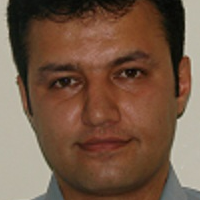Signal detection Using Rational Function Curve Fitting
In this manuscript, we proposed a new scheme in communication signal detection which is respect to the curve shape of received signal and based on the extraction of curve fitting (CF) features. This feature extraction technique is proposed for signal data classification in receiver. The proposed scheme is based on curve fitting and approximation of rational fraction coefficients. For each symbol of received signal, a specific rational function approximation is developed to fit with received signal curve and the coefficients of the numerator and denominator polynomials of this function are considered as new extracted features. Then it will be shown that the coefficients of this polynomials have the potential for using as new features in a statistical classifier and have better performance in competition with other solutions such as linear and even nonlinear feature extraction methods in classification. The criteria used in performance evaluation are probability of error and signal to noise ratio in FSK and ASK modulations. For each symbol of received signal, a specific rational function approximation is developed to fit with received signal curve and the coefficients of the numerator and denominator polynomials of this function are considered as new extracted features. In the proposed method, there are two phases train and test, which are described in the following two steps. First, in the train phase, the algorithm starts by using binary FSK and ASK modulations, so first, a system generate a number of random symbols then signal is modulated by binary ASK and FSK. The Modulated FSK and ASK signals are corrupted in the channel with noise. The noise-corrupted signal enters the receiver at the corresponding transmitted interval. Then, the samples are extracted from the modulated signals based on predetermined sample rates. Then, we fit a rational fraction curve with degrees of L and M to each set of N samples. Afterward, we apply all the numerator (L+1) and denominator (M) coefficients to 0 and 1 classes in the binary FSK and ASK modulations. We store all the specific coefficients of the deterministic symbols at different M and L values to create the corresponding histogram in each class. In each histogram (i.e., the coefficients of a class), we extract and store specific coefficients that completely discriminate between the two classes. Therefore, we determine all the histograms where there is a good approximation of discrimination and create the related table. Note that the data used in histograms are the training data. Then, in order to analyze and evaluate the performance of the proposed curve fitting method, we send the testing data through the channel corresponding to the related modulator. The results of the proposed classification method show that it provides smaller error rate regarding to the theoretical error rate probability in AWGN channel.
- حق عضویت دریافتی صرف حمایت از نشریات عضو و نگهداری، تکمیل و توسعه مگیران میشود.
- پرداخت حق اشتراک و دانلود مقالات اجازه بازنشر آن در سایر رسانههای چاپی و دیجیتال را به کاربر نمیدهد.



